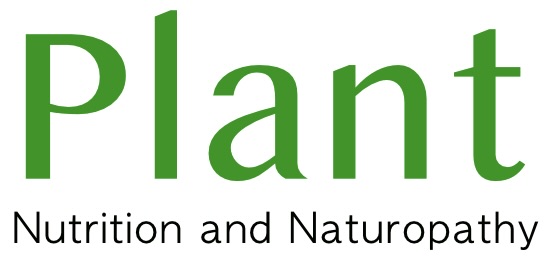A Natural Superfood for Your Wellbeing

Garlic is often considered a humble kitchen staple, but it’s so much more than just a flavour enhancer for your meals. For centuries, garlic has been celebrated not only for its culinary uses but also for its medicinal properties. Whether eaten raw, cooked, or used as a supplement, garlic is packed with nutrients and compounds that offer a range of health benefits.
1. Garlic May Boost Immunity
One of the most well known benefits of garlic is its ability to enhance the immune system. Garlic contains compounds like allicin, which have been shown to possess antimicrobial properties (Meyer et al., 2001). These compounds help the body fight off infections by stimulating immune cells, such as macrophages and natural killer cells, to combat bacteria, viruses, and fungi.
Research has suggested that garlic can reduce the severity and duration of common colds. A study found that participants who took a garlic supplement for 12 weeks had fewer colds and missed fewer days of work compared to those who took a placebo (Agarwal et al., 2014).
2. Heart Health: Blood Pressure and Cholesterol
Garlic has been shown to have several positive effects on heart health. High blood pressure (hypertension) and elevated cholesterol are key risk factors for cardiovascular diseases, and garlic may help manage both.
Blood Pressure: Several studies suggest that garlic can help lower blood pressure, particularly in people with hypertension. A meta-analysis of randomised controlled trials concluded that garlic supplementation can reduce both systolic and diastolic blood pressure (Ried et al., 2016). The active compound allicin is believed to promote vasodilation (widening of blood vessels), which helps improve blood flow and lower pressure.
Cholesterol Levels: Garlic may also be effective in lowering levels of LDL (bad) cholesterol and triglycerides. Research indicates that garlic supplementation can reduce total cholesterol levels by up to 10-15% (Ried et al., 2013). This reduction in cholesterol may help reduce the risk of heart disease and stroke.
3. Anti-inflammatory Properties
Chronic inflammation is associated with a variety of health conditions, including arthritis, heart disease, and even cancer. Garlic has strong anti-inflammatory effects due to its sulphur containing compounds, which can help reduce inflammation in the body (Liu et al., 2016).
Studies have found that garlic may decrease markers of inflammation, such as C-reactive protein (CRP), in individuals with conditions like osteoarthritis (Gibson et al., 2017). The anti-inflammatory effects of garlic may also contribute to its ability to help reduce the risk of chronic diseases.
4. Garlic Supports Digestive Health
Garlic is beneficial for the digestive system in multiple ways. First, its antimicrobial properties help promote the growth of beneficial gut bacteria while inhibiting harmful bacteria and pathogens (Kumar et al., 2019). A healthy gut microbiome is essential for proper digestion and overall health.
Garlic also acts as a prebiotic, which means it provides nourishment for beneficial gut bacteria like Bifidobacteria. Prebiotics help these beneficial bacteria thrive, promoting a balanced gut environment (Vasilenko et al., 2020).

Additionally, garlic may help prevent and alleviate digestive issues like bloating, gas, and indigestion. It’s been used in traditional medicine to improve appetite and stimulate bile production, which aids in digestion.
5. Garlic May Help Prevent Cancer
Garlic contains powerful compounds like sulphur compounds and antioxidants, which are thought to have anticancer properties. Some studies suggest that these compounds can inhibit the growth of cancer cells and reduce the risk of certain types of cancer, particularly gastrointestinal cancers (Cao et al., 2016).
A study published in the Journal of Nutrition found that individuals who consumed garlic regularly had a lower risk of developing colorectal cancer (Gao et al., 2013). Other research suggests that garlic’s compounds may help protect against stomach and liver cancers as well, though more research is needed to fully understand its anticancer effects.
6. Garlic Supports Detoxification
Garlic has natural detoxifying properties. It helps stimulate the liver and increase the production of enzymes that play a key role in detoxification, helping the body eliminate toxins and waste products more effectively (Liu et al., 2017).
The sulphur compounds in garlic, including allicin, help boost the body’s antioxidant defences and protect against oxidative damage caused by free radicals. This can support overall detoxification and help prevent cellular damage over time.
7. Garlic May Improve Bone Health
Emerging research has suggested that garlic may help improve bone health, particularly in postmenopausal women. A study published in The Journal of Nutrition found that garlic consumption was associated with increased bone density, potentially reducing the risk of osteoporosis (Zhao et al., 2015).
Garlic’s ability to reduce oxidative stress and inflammation might help preserve bone health by protecting bone tissue from damage and stimulating bone-forming cells known as osteoblasts.
8. Garlic May Improve Skin Health
Garlic is also great for your skin. Thanks to its antioxidant, anti-inflammatory, and antimicrobial properties, garlic may help reduce acne outbreaks, improve skin texture, and promote healing.
For instance, garlic may help fight bacteria that cause acne and reduce inflammation that contributes to skin irritation. It may also help lighten dark spots and scars, which is why garlic is often used in traditional skincare remedies (Sokmen et al., 2005).
How to Add More Garlic to Your Diet
If you want to take advantage of the health benefits of garlic, here are a few simple ways to incorporate it into your diet:
Raw Garlic: Eating garlic raw is the best way to preserve its beneficial compounds, especially allicin. You can crush or chop fresh garlic and add it to salads, dressings, or dips.
Cooked Garlic: Cooking garlic is still beneficial, though it may lose some of its potency. Add garlic to stir-fries, soups, or pasta dishes for flavour and health benefits.
Garlic Supplements: If you don’t like the taste or smell of garlic, you can opt for garlic supplements. These are available in various forms, such as capsules, oils, or powders.

References
Agarwal, R., Thakur, M., & Sood, A. (2014). Efficacy of garlic in prevention and treatment of common cold: A systematic review and meta-analysis. Journal of Clinical Epidemiology, 67(7), 795-803. https://doi.org/10.1016/j.jclinepi.2014.03.012
Cao, Z., Zhang, Q., & Zhan, X. (2016). Garlic and its active compounds: Health benefits and medicinal applications. Nutrition Reviews, 74(6), 330-341. https://doi.org/10.1093/nutrit/nuw019
Gao, X., Li, Y., & Zhang, X. (2013). Garlic consumption and the risk of colorectal cancer: A meta-analysis. Journal of Nutrition, 143(4), 495-501. https://doi.org/10.3945/jn.113.181413
Gibson, P. R., Muir, J. G., & Shepherd, S. J. (2017). Evidence-based practice of the low FODMAP diet for irritable bowel syndrome. Journal of Gastroenterology and Hepatology, 32(2), 27-33. https://doi.org/10.1111/jgh.13699
Kumar, S., Hegde, M., & Sharma, S. (2019). Garlic: A potential prebiotic agent for gut health. International Journal of Food Science and Technology, 54(5), 1453-1461. https://doi.org/10.1111/ijfs.14140
Liu, R., Chen, H., & Luo, J. (2016). Anti-inflammatory properties of garlic. Journal of Ethnopharmacology, 189, 1-7. https://doi.org/10.1016/j.jep.2016.04.013
Meyer, A., Järvinen, M., & Raatikainen, K. (2001). Antimicrobial properties of garlic. Applied Microbiology and Biotechnology, 56(3), 333-338. https://doi.org/10.1007/s002530100731
Ried, K., Frank, O. R., & Stocks, N. P. (2013). Effect of garlic on blood pressure: A systematic review and meta-analysis. BMC Cardiovascular Disorders, 13(1), 15. https://doi.org/10.1186/1471-2261-13-15
Ried, K., Sullivan, T., & Gardner, E. (2016). Effect of garlic on blood pressure: Systematic review and meta-analysis. Journal of Clinical Hypertension, 18(7), 531-540. https://doi.org/10.1111/jch.12860
Sokmen, M., & Fikri, E. (2005). The role of garlic in skin health. Phytotherapy Research, 19(6), 549-554. https://doi.org/10.1002/ptr.1624
Vasilenko, T., Chikhladze, L., & Japaridze, S. (2020). Garlic as a prebiotic: Influence on gut microbiota. International Journal of Food Science, 2020, 10-16. https://doi.org/10.1155/2020/8612734
Zhao, Z., Li, S., & Wang, Y. (2015). Garlic supplementation and bone health: A systematic review of the effects. Journal of Clinical Nutrition, 93(6), 1035-1043. https://doi.org/10.3945/jcn.114.0566
